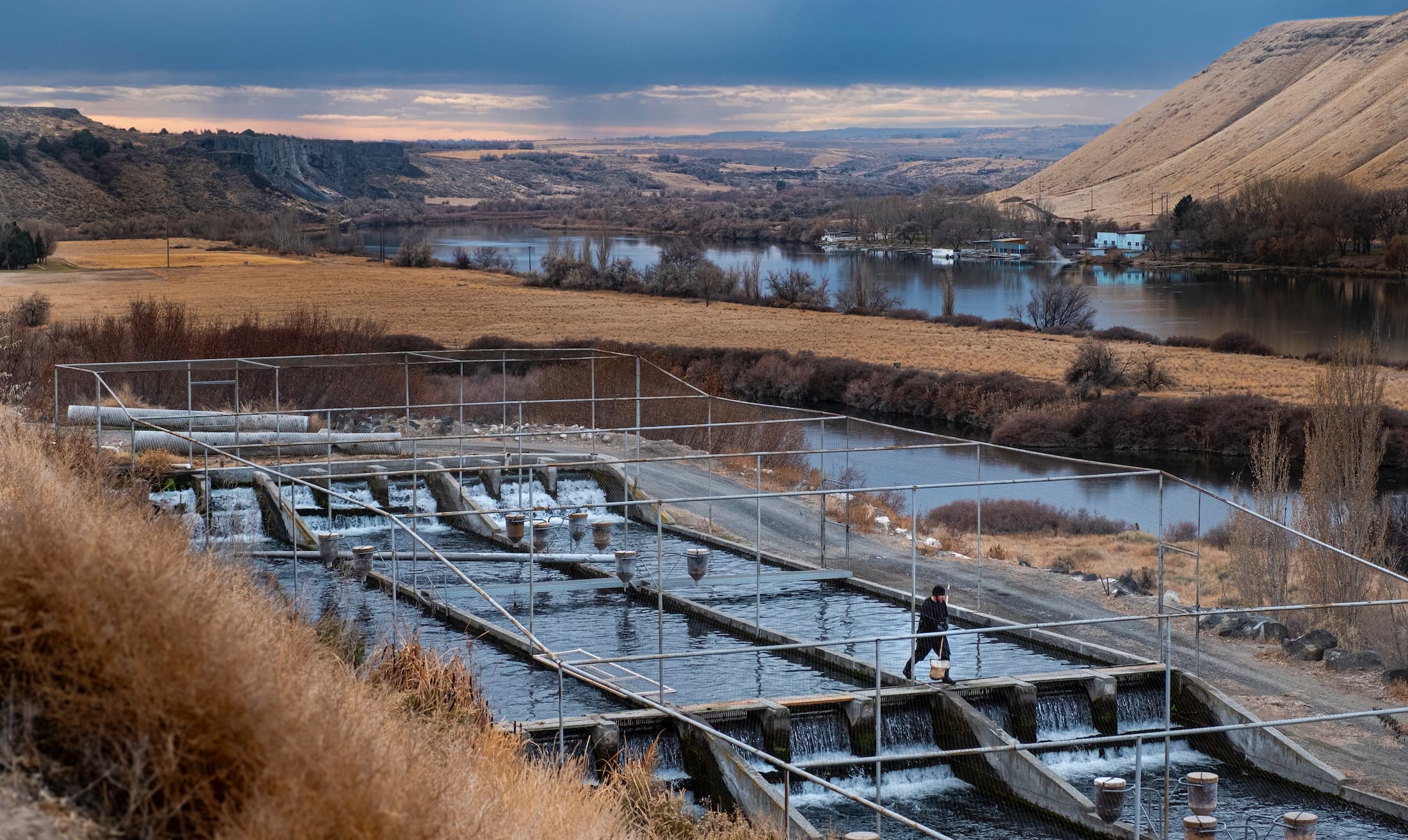Fish in, Fish Out — The Practice of Feeding Fish to Fish
Feeding fish to fish has become a highly controversial issue, but should it be? We use fish products in our trout and salmon feeds because they provide essential nutrition, naturally and sustainably. Keeping fish well-fed involves a delicate balancing act to provide essential nutrients and energy. Here’s how we do it.

Why are fish fed to fish?
Energy is like currency, and the calories we consume are used to pay our bodies’ biochemical bills. The cost of daily life is lower for fish than for terrestrial animals, mostly because they don’t bother to regulate their body temperature. Being cold-blooded is a major cost savings, and that allows fish to invest more energy in lean growth.
With energy to spare, the only thing fish need to grow is plenty of protein containing the right mix of amino acids. For carnivorous fish like trout and salmon, their natural diet—other fish—is perfectly balanced to meet their needs. However, the economic and environmental costs of this type of diet are just too high. We blend terrestrial plant and animal ingredients with marine ingredients to give our fish what they need, without waste.
What is fish meal?
Fish meal is a protein-rich powder mostly made from forage fish like anchovies and other small, bony fish. Using a process called rendering, the fish are cooked, pressed, and dried to produce fish meal and fish oil, another valuable feed ingredient we use in our feeds. Together, fish meal and fish oil provide amino acids, fatty acids, and a range of other essential nutrients our fish need.
Is it safe?
Heat and pressure applied during the rendering process effectively sterilize fish meal, neutralizing any bacteria or viruses that the wild fish might have carried. Although feeding fish meal to fish may bring to mind a similar practice in cattle farming which led to outbreaks of bovine spongiform encephalopathy (BSE) or mad cow disease, experts have concluded that fish meal poses no prion disease threat to humans, fish, or livestock.
BSE outbreaks occurred when cattle were fed bovine meat and bone meal made from infected livestock, an unnatural diet for which these strict herbivores proved ill-equipped. Prion diseases generally don’t affect carnivores because these species are adapted to eating other animals. In the case of predatory fish like trout and salmon, eating other fish (including those of the same species) is a perfectly natural part of their evolutionary history and contemporary biology. There are no known prion diseases of fish, but if they exist, it is extremely unlikely that they would also affect warm-blooded mammals like humans.
Used sensibly, fish meal is a sustainable choice
Fish meal fisheries are some of the most carefully managed in the world and have been stable for decades. What’s more, it’s been estimated that half of the world’s fish meal will soon come from improved processing of seafood waste. Demand for fish meal is growing, but the aquaculture industry has responded by stretching the existing supply—doing more with less—instead of pushing for greater marine harvests.
What other ingredients go into the mix?
Our fish eat many of the same foods you do, just in a different form. They eat cereals like wheat and corn, legumes like soybeans, and meats like chicken and pork. Most of the ingredients are not genetically modified, but some of the plant products are from crops that have been improved to safely increase yields and reduce pesticide use—good news for our fish and our customers.
Achieving sustainability by eating lower on the food chain
Sustainability experts have suggested eating less meat can help to reduce carbon footprints and environmental impacts. This is because when you eat meat, you are effectively consuming the food on your plate and all the food the chicken, pig, or fish ate before they became your dinner. We might call it the food chain, but scientists call them trophic levels—see call-out box—and eating lower trophic level foods is better for the environment.
In the wild, trout and salmon eat other fish, so their trophic level is 4. But fed a carefully balanced diet of plant and animal ingredients, our fish have a trophic level that’s much lower. Our fish and customers are achieving greater sustainability by eating less on the food chain.
Will trout and salmon feeds always be the same?
When it comes to feeds, the only constant thing is change. We are continuously refining our feed formulations and scanning the horizon for promising new ingredients—like algae, fish meal derived from invasive carp, and others—that will provide first-rate nutrition, safely and sustainably.
Call-out box text:
We might call them herbivores, omnivores, and carnivores, but scientists assign “trophic levels” to organisms based on what they eat. Plants use only the sun’s energy and nutrients they absorb from the soil—they have a trophic level of 1. Animals that eat plants are level 2, and animals that eat plant-eating animals are level 3. Animals that eat other animal-eating animals are assigned trophic levels of 4 or 5, depending on how high they are in the food chain.